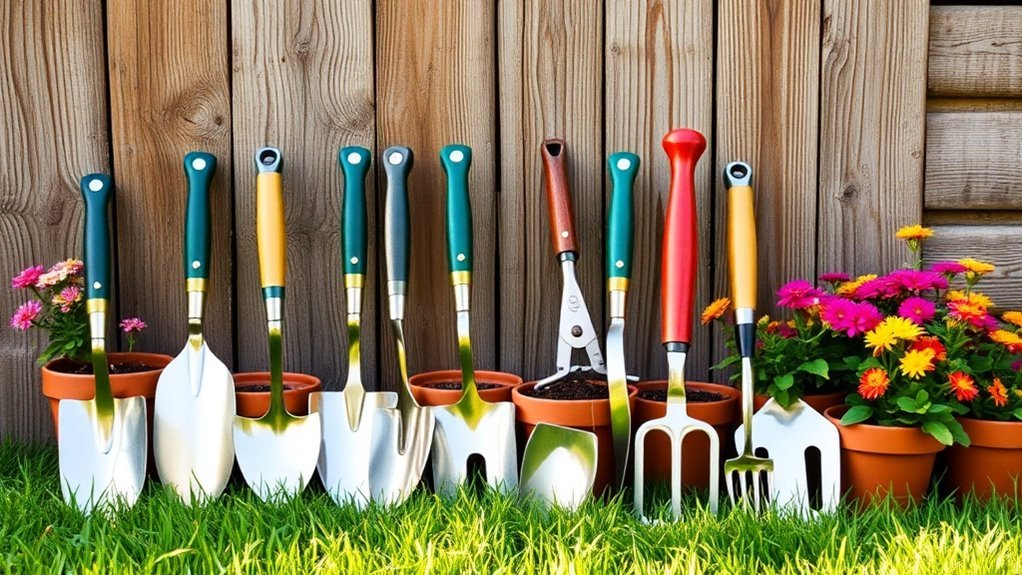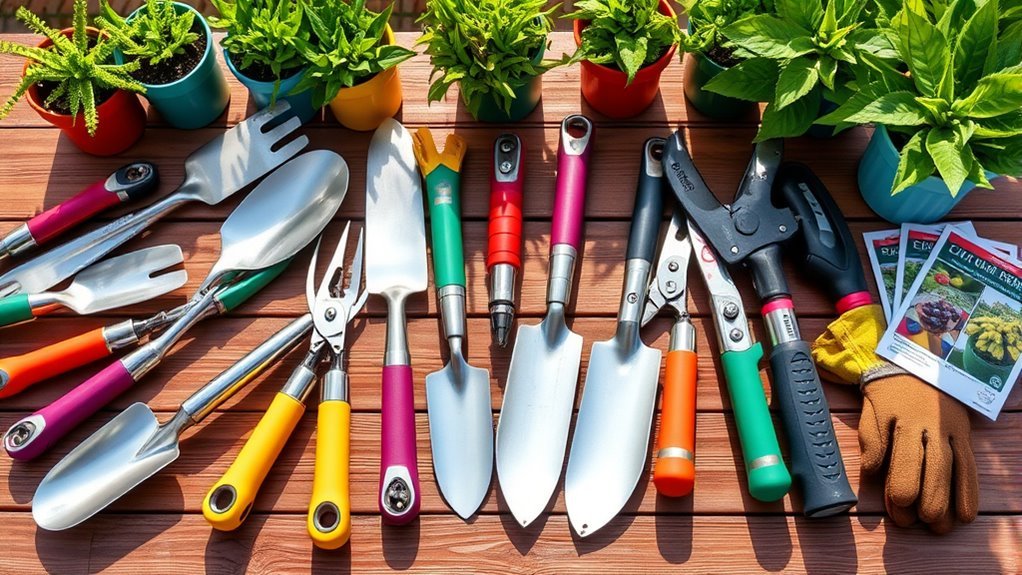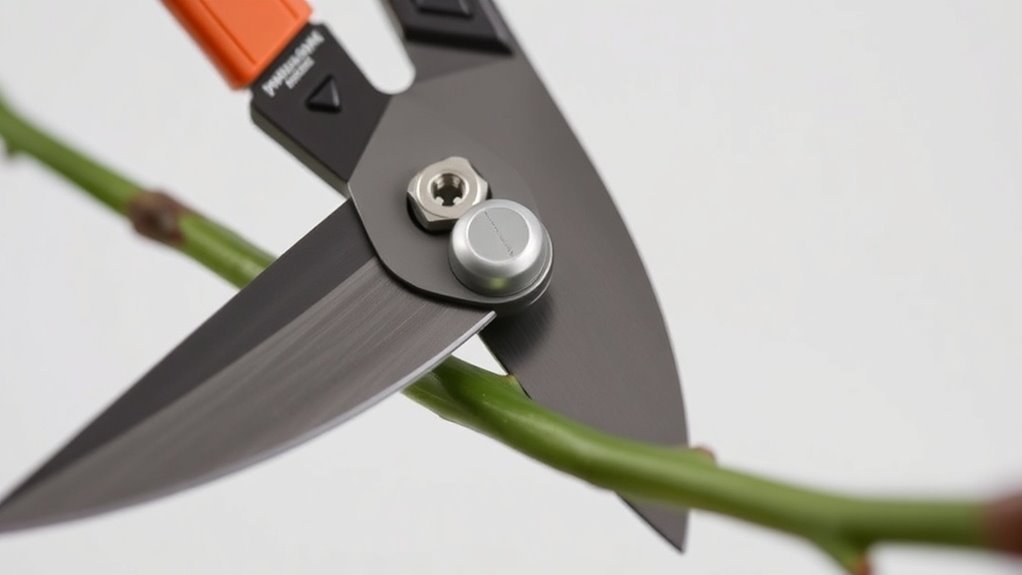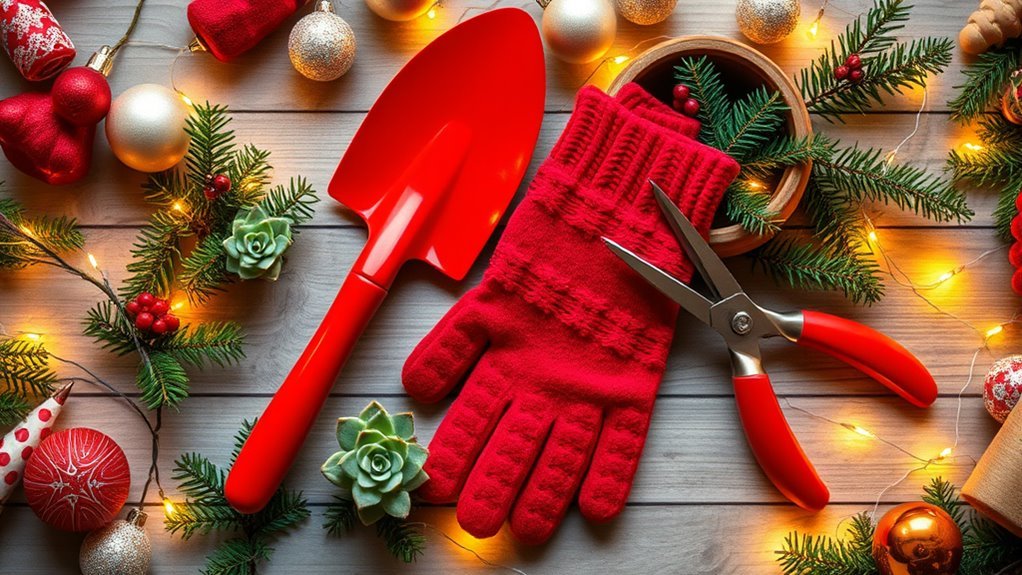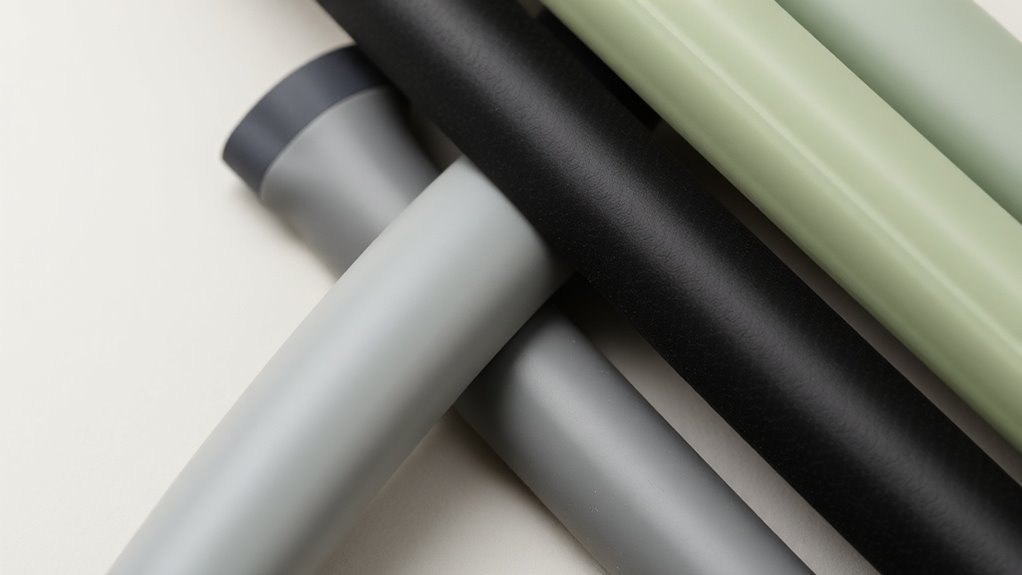Watering Systems: How Sprayers & Nozzles Work
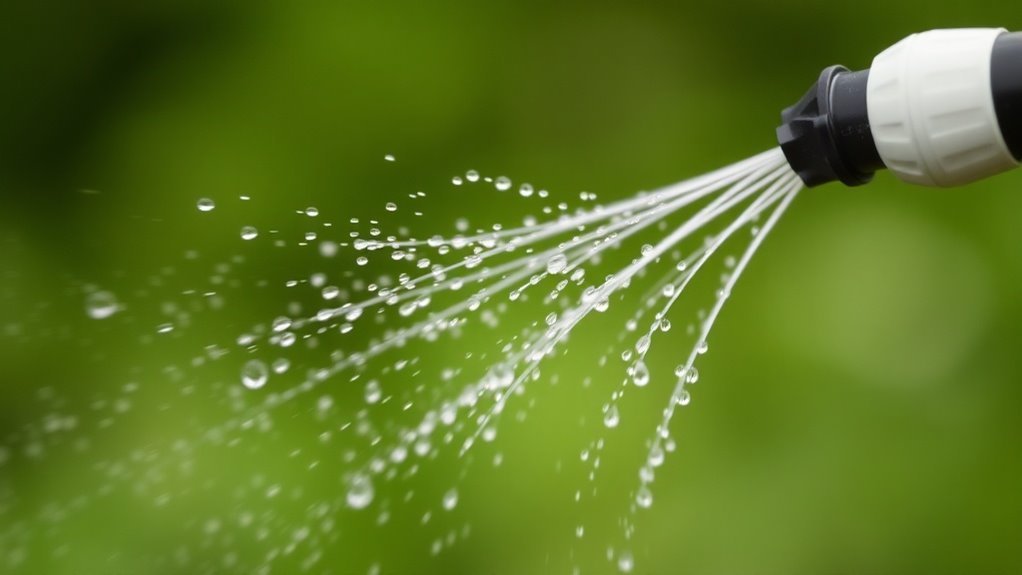
Sprayers and nozzles are key for efficient watering systems in your garden. Sprayers come in various types, like handheld and stationary, catering to different garden sizes. Nozzles shape water distribution, with adjustable options for customized spray patterns. Proper pressure management is essential to guarantee even coverage and avoid plant damage. Automated systems enhance convenience by scheduling watering and monitoring conditions. There’s much more to explore about optimizing your irrigation techniques for better plant health.
Key Takeaways
- Sprayers are essential for irrigating gardens, with options like handheld, stationary, and drip sprayers available for different garden sizes and needs.
- Nozzles determine water distribution, offering various types such as spray, soil soaker, and adjustable nozzles for tailored watering.
- Pressure and flow rates are important; balanced pressure ensures even water distribution and reduces the risk of plant damage.
- Automated sprayers, equipped with controllers and sensors, streamline watering by scheduling and monitoring conditions for optimal plant hydration.
- Regular maintenance, including cleaning nozzles and checking hoses, is crucial for maintaining efficient and effective watering systems.
Understanding Sprayers: Types and Functions
When you think about watering systems, understanding sprayers is essential, as they play a key role in efficient irrigation.
Sprayers come in various types, each designed for specific applications. For instance, handheld sprayers are great for small gardens and potted plants, while stationary models cover larger areas, often found in lawns.
Sprayers are specially designed for various applications, from handheld models for small gardens to stationary ones for expansive lawns.
There are also adjustable sprayers that allow you to customize the spray pattern, making them versatile for different plant types or terrain. Drip sprayers focus on delivering water directly to the root zone, minimizing waste.
Knowing the right sprayer for your needs helps guarantee your plants receive the water they require without oversaturation, ultimately promoting healthier growth and conserving resources in your watering systems.
The Mechanics of Nozzles
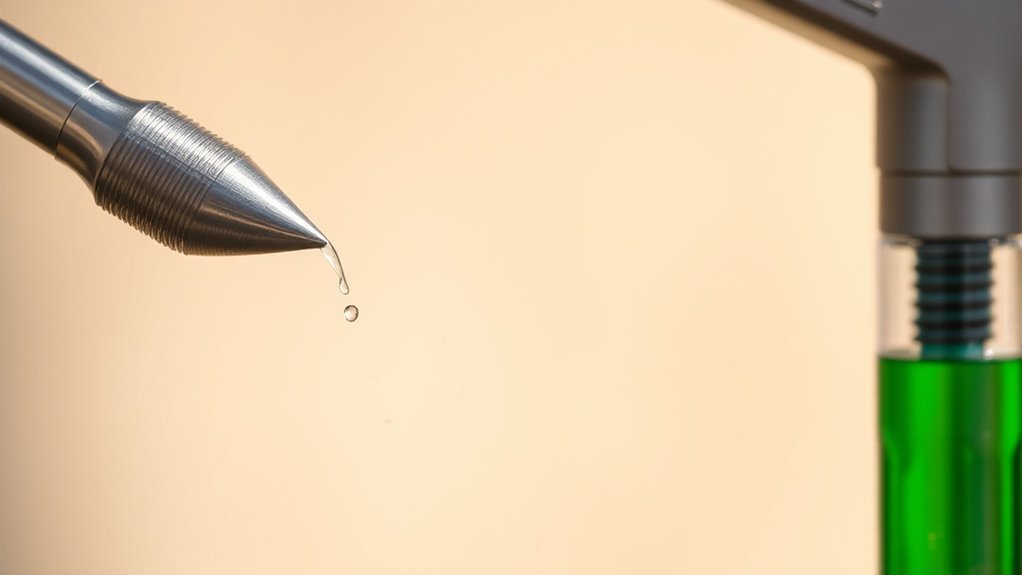
When it comes to watering systems, understanding the mechanics of nozzles is essential.
You’ll discover different types of nozzles, how pressure affects flow, and the various spray patterns they create.
Each aspect plays a significant role in ensuring your plants get the right amount of water.
Types of Nozzles
Nozzles play an essential role in watering systems, shaping how water is distributed across your garden or lawn.
There are various types of nozzles to evaluate, each serving different purposes. For instance, spray nozzles deliver a fine mist, ideal for delicate plants.
On the other hand, soil soaker nozzles release water slowly, perfect for deep watering. Adjustable nozzles let you customize the spray pattern, while jet nozzles create powerful streams for larger areas.
If you’re looking to cover broad spaces efficiently, a fan nozzle sprays in a wide arc.
Understanding these options can help you choose the right nozzle for your specific watering needs, ensuring your plants thrive with the right amount of moisture.
Pressure and Flow
Understanding how nozzles function is vital to maximizing the efficiency of your watering system. The mechanics of pressure and flow play a significant role in this process.
When water exits the nozzle, its pressure dictates how forcefully and quickly it sprays out. Higher pressure often leads to increased flow rates, allowing for larger areas to be covered in less time. However, too much pressure can cause uneven distribution.
You’ll want to find a balance, guaranteeing that your system provides an adequate flow without overwhelming the plants. Adjustments can usually be made through pressure regulators or by choosing appropriate nozzle types.
Spray Patterns Explained
While maximizing efficiency in your watering system, getting a grasp on spray patterns is essential.
Understanding how different nozzles create varied patterns can greatly impact your watering effectiveness.
Here’s a quick overview of three common spray patterns:
- Full Cone: This pattern delivers water in a wide fan shape, perfect for covering large areas quickly.
- Flat Fan: If you’re looking for precise application, the flat fan pattern is best. It’s great for rows of plants or beds.
- Misting: Ideal for delicate seedlings, misting provides a gentle, fine spray that doesn’t disturb the soil or plants.
How Automated Sprayers Work
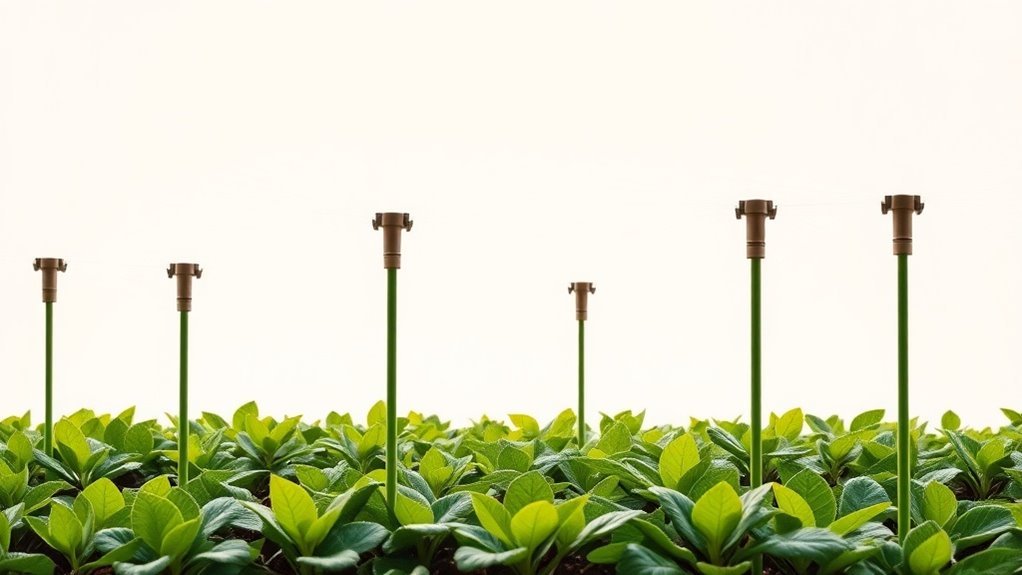
Automated sprayers consist of several key components designed to make watering your plants efficient and hassle-free.
You’ll appreciate how these systems not only save time but also guarantee that your garden receives the correct water amount.
Let’s explore how these devices work together to enhance your watering routine.
Components of Automated Sprayers
As you explore the world of automated sprayers, you’ll find that their components work in harmony to deliver precise and efficient watering. Understanding these parts helps you appreciate how technology enhances your gardening experience.
Here are three key components you’ll encounter:
- Controllers: These devices schedule watering times and durations, allowing you to set it and forget it.
- Sensors: Whether moisture, rain, or temperature sensors, they guarantee your plants receive just the right amount of water.
- Spray Heads/Nozzles: These disperse water evenly across your garden, tailored to various plants’ needs.
Benefits of Automation
Understanding the components of automated sprayers sets the stage for appreciating the benefits of automation in gardening. By employing these sprayers, you’ll save time and effort as they deliver the right amount of water to your plants without constant manual intervention.
Automation means you can schedule watering according to your plants’ needs, ensuring they’re well-hydrated even when you’re busy or away.
These systems often come equipped with sensors that monitor soil moisture levels, so they only activate when necessary, reducing water waste. Additionally, automated sprayers can help maintain consistency in watering, promoting healthier plant growth.
Choosing the Right Sprayer for Your Garden
How do you decide which sprayer is best suited for your garden’s needs?
Choosing the right sprayer can make all the difference in your garden’s health. Here are three key factors to bear in mind:
Choosing the right sprayer is crucial for maintaining a healthy garden environment.
- Garden Size: If you have a small garden, a hand-held sprayer might suffice, while a larger area may require a backpack or hose-end sprayer for efficiency.
- Plant Types: Take into account the types of plants you’re growing. Delicate flowers may need a fine mist nozzle, whereas vegetable crops might require a stronger spray.
- Water Pressure: Confirm your water source can handle the sprayer you choose. High-pressure sprayers work well for wide areas, but low-pressure options are perfect for gentle watering.
Taking these factors into account will help you select the ideal sprayer for your garden.
Maintenance Tips for Sprayers and Nozzles
Regular maintenance of your sprayers and nozzles is essential for keeping your garden healthy and guaranteeing peak performance.
Start by inspecting your equipment regularly for any clogs or damage. Clean the nozzles with a soft brush or soak them in vinegar to remove mineral buildup. Ascertain that all connections are tight to avoid leaks.
Check hoses for cracks or wear, replacing them as necessary. After each use, flush your sprayers with clean water to prevent residue accumulation. Store sprayers in a dry location to protect them from the elements and prolong their life.
Finally, keep an eye on the spray pattern; if it changes, it might be time for a deeper cleaning or replacement. Maintaining optimal pressure is critical for achieving the most effective spray distribution. Prioritize these maintenance steps for best results.
Efficient Irrigation Techniques With Sprayers and Nozzles
Efficient irrigation techniques can make a significant difference in your garden’s health.
Utilizing sprayers and nozzles effectively helps guarantee your plants get the right amount of water without waste. Here are three techniques to take into account:
- Adjustable Nozzles: Use nozzles that let you control the flow and pattern of water. This prevents overwatering in certain areas while guaranteeing others receive adequate moisture.
- Timed Spraying: Set a timer for your sprayers to run during cooler parts of the day, reducing evaporation and maximizing water absorption.
- Zone Watering: Divide your garden into zones based on plant water requirements. This allows for targeted watering, making your efforts more efficient and effective.
Questions
Can Sprayers Be Used for Fertilizing Plants?
Yes, you can use sprayers for fertilizing plants. Just guarantee you mix the fertilizer correctly with water and adjust the sprayer settings. This method allows for even distribution, promoting healthy growth and nutrient absorption.
How Do Weather Conditions Affect Sprayer Performance?
Weather conditions dance around sprayers, affecting their performance like a fickle muse. Wind can disperse droplets, while temperature changes influence evaporation rates. You’ll find timing your watering essential for achieving ideal results in varying climates.
Are There Environmentally Friendly Sprayers Available?
Yes, there are environmentally friendly sprayers available. You can find options that use organic materials, efficient water delivery, and low-emission technology, ensuring your watering practices support sustainable gardening without harming the environment.
What Are the Common Problems With Sprayers and How to Fix Them?
Common problems include clogs, uneven spray patterns, and leaks. To fix them, clean filters and nozzles regularly, adjust pressure settings, and inspect hoses for damage. With maintenance, your sprayer’ll perform efficiently for longer periods.
How Long Should I Run My Sprayer for Optimal Watering?
You wouldn’t want your plants to think they’re on a desert island! Ideally, run your sprayer for 20 to 30 minutes, ensuring an even soak, depending on your soil type and weather conditions.
Conclusion
Just like a skilled painter brings a canvas to life with a brush and vibrant colors, you can transform your garden with the right sprayers and nozzles. By understanding their mechanics and choosing wisely, you’ll nurture your plants efficiently, creating a flourishing masterpiece. Remember, just as a painter cleans their tools, regular maintenance keeps your irrigation system performing at its best. So, pick up your watering tools, and let your garden bloom in every shade of green.

